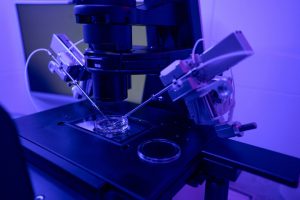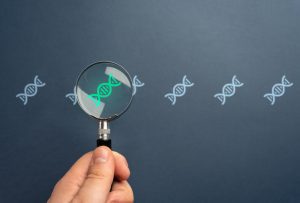A research team at Kyoto University has discovered STAG3 cohesin, a new mitotic cohesin complex that contributes to the formation of the unique DNA architecture of spermatogonial stem cells (SSCs), the stem cells from which sperm are produced. This “DNA organizer” is crucial for sperm production in mice: without STAG3, SSCs cannot differentiate properly, leading to fertility problems.
In humans, the researchers found that STAG3 is highly expressed in immune B cells and in B-cell lymphomas (a type of blood cancer), and that blocking it slowed the growth of these cells. This discovery could pave the way for new strategies to treat infertility and certain types of cancer. The results of this study were published online in Nature Structural & Molecular Biology.
Spermatogonial Stem Cells Have a Unique Way of Organizing their DNA
Our bodies contain many different cell types, but they all contain the same DNA. What makes each cell type unique is the way this DNA is modified, packaged, folded, and organized. Imagine DNA as a very long piece of string. In each cell nucleus, about two meters of this DNA string must be folded and stored in a space smaller than the width of a human hair.
This folding is highly organized, with special boundaries called insulins that separate different regions of DNA from each other and control which genes are turned on or off. Ring-shaped protein complexes, called cohesins, play a key role in forming these boundaries. Until now, it was thought that cohesin complexes came in two main forms: mitotic cohesins (containing STAG1 or STAG2 together with RAD21) and meiotic cohesins (containing STAG3 together with REC8 or RAD21L).
Germ cells are unique in that they pass DNA on to the next generation and undergo major changes in DNA folding during their development. These cells undergo a massive restructuring of their DNA packaging during their development. Notably, SSCs have a unique way of organizing their DNA with unusually weak boundaries, but scientists do not yet understand how this happens.
Key Findings
Since cohesin complexes contribute to the formation of DNA boundaries and SSCs divide mitotically before entering meiosis (a special form of cell division that only occurs in germ cells and through which sperm or egg cells are formed), the research team decided to map where different cohesin proteins were located in SSCs cultured in vitro and which proteins were present at each location. They found that RAD21, which normally works with STAG1 or STAG2 in dividing cells, instead worked with STAG3. Until now, it was assumed that this protein only had a function during meiosis. Using immunoprecipitation mass spectrometry (a technique that can be used to determine which proteins are linked to each other), they confirmed that RAD21 and STAG3 form a complex, thereby discovering a new type of cohesin, which they named STAG3 cohesin.
To find out what function this new complex has, the researchers generated two types of genetically modified SSCs in vitro: one group had no STAG3, while the other contained only STAG3 (without STAG1 or STAG2). They found that STAG3 cohesin is responsible for the unusually weak DNA boundaries in SSCs. Most importantly, however, in mice lacking STAG3, the SSCs were unable to efficiently transition from their stem cell state to the next stage of sperm development. This led to a fertility problem, demonstrating that STAG3 cohesin does more than just organize DNA and is critical for the proper development of germ cells.
Since STAG3 functions in mitotic dividing cells, the team then investigated whether it might also have a function in other human cell types. By analyzing large datasets of all human cell types, they found that STAG3 is highly expressed in immune B cells and in B-cell lymphomas, a type of blood cancer. Interestingly, blocking STAG3 in laboratory studies caused these lymphoma cells to grow much more slowly, suggesting that STAG3 could be investigated as a potential target for future cancer research.
Potential Breakthrough for Stem Cell Biology, Reproductive Medicine, and Cancer Treatment
This study has identified STAG3 cohesin as a new type of DNA-organizing protein complex that functions very differently from previously known complexes. Due to its unique properties, further research on this complex is expected to improve our understanding of how gene activity is controlled by DNA organization. One of the most striking discoveries was that a simple change in STAG3 concentration could alter the proportion of stem cells in the testes. This suggests a novel mechanism that regulates the SSC state at the boundary between normal cell division and the onset of meiosis.
Beyond germ cells, the discovery that blocking STAG3 slows the growth of B-cell cancers points to a potential role for STAG3 in future cancer research. Although further research is needed to uncover the exact mechanisms, these findings offer new insights that could advance stem cell biology, reproductive medicine, and cancer treatment.






